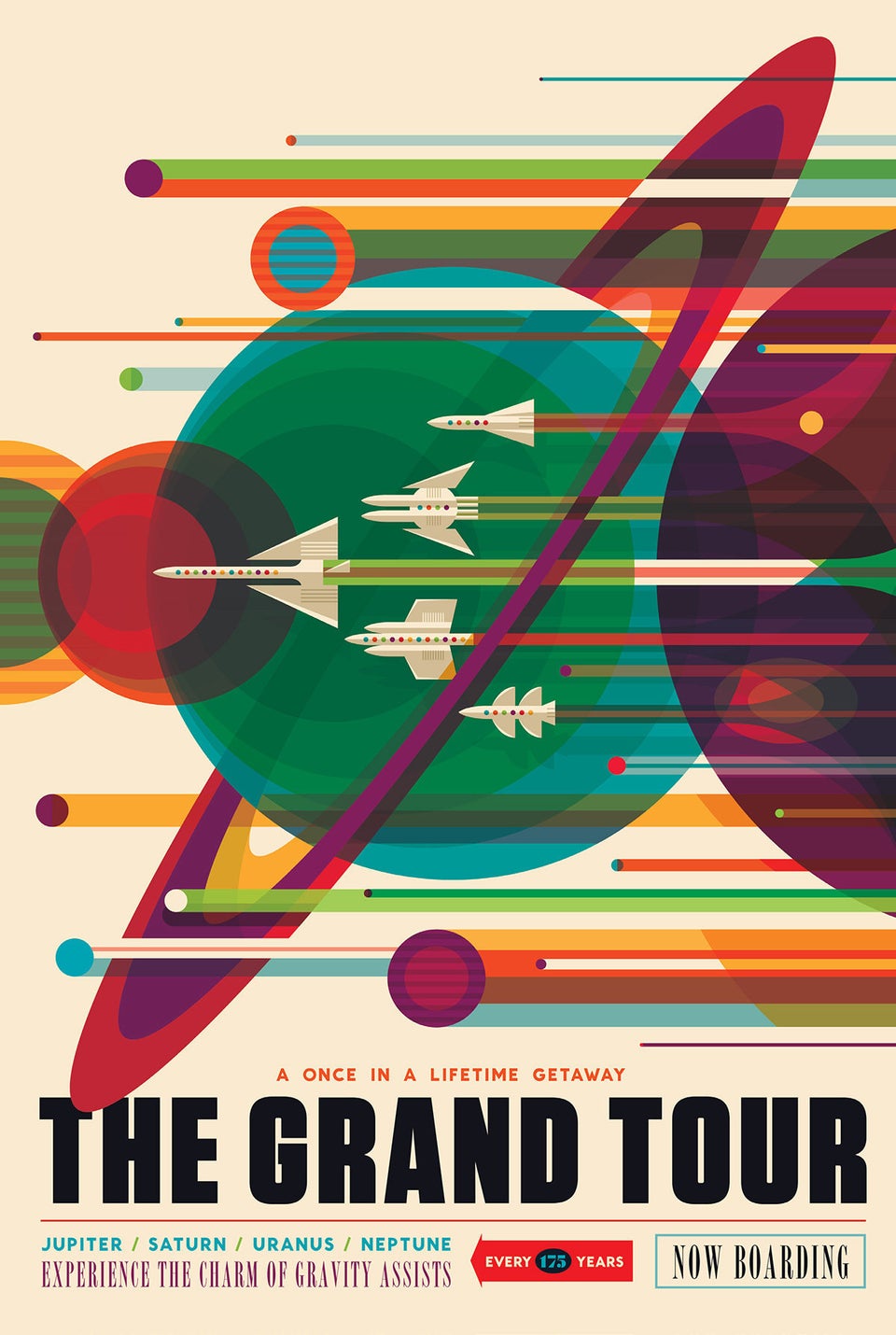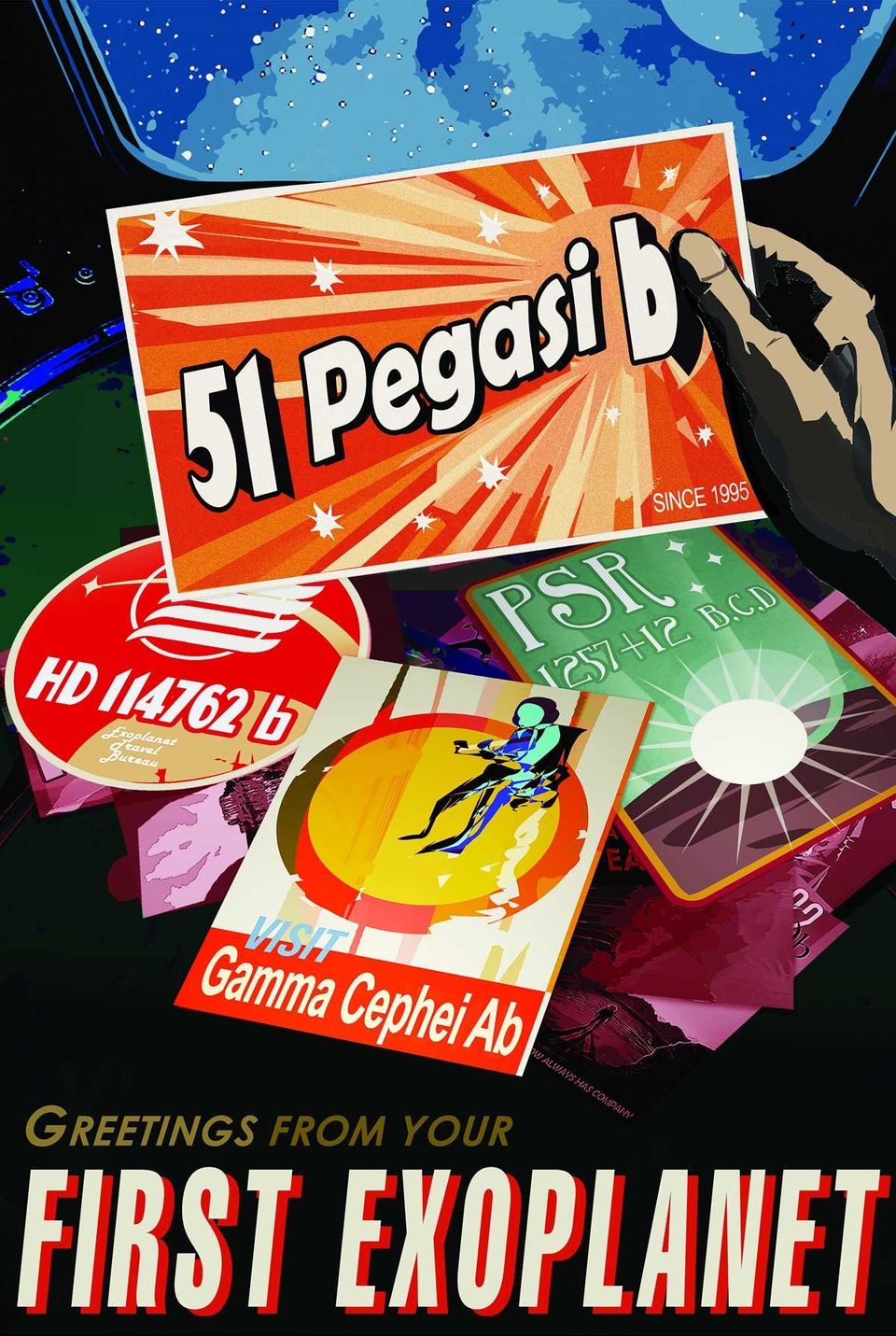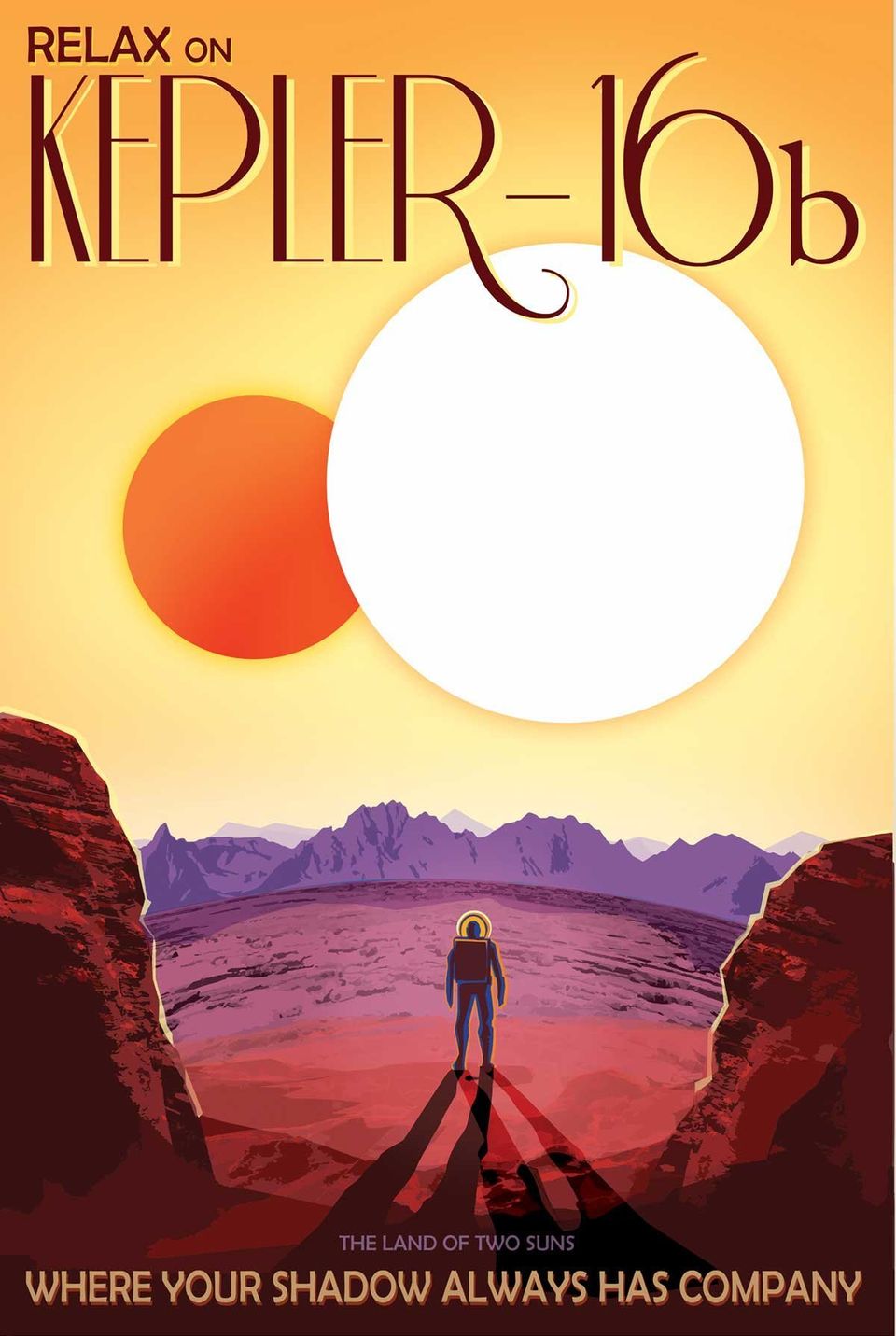These spectacular space tourism posters imagine what advertisements for interplanetary vacations could one day look like.
Fourteen tongue-in-cheek trips to Mars, Jupiter, Venus and a host of exoplanets are on offer in the Visions of the Future series that NASA commissioned at its Jet Propulsion Laboratory in Pasadena, California.
"Imagination is our window into the future," said NASA, which uploaded the posters to its website on Wednesday.
JPL visual strategist Dan Goods told CNN the images were meant to spark people's interest in the universe.
"Many of the things we are doing today were imagined by artists and science fiction writers decades ago," he said. "These destinations are all actual places that we know about, and one day, perhaps humans can go to them in the future."
Although deep space travel for humans may seem a long way off, Goods said it's "really important to us that we worked with the technical community to make sure what we were showing could someday happen."
NASA commissioned the Seattle design studio Invisible Creature to create three of the posters -- of "Mars," "Enceladus" and "The Grand Tour." The space agency released five others as part of JPL's Exoplanet Travel Bureau series in 2015.
High-definition versions of the posters are available to download for free from the JPL website.
And here they are:














Also on HuffPost:
